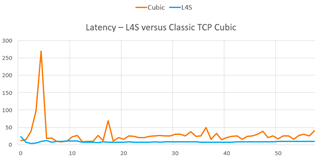CommScope participated in the world’s first-ever “L4S Interop Event” hosted by IETF-114 Hackathon & Code Lounge on July 23rd, 2022. The event, coordinated by Comcast, Apple, Google and CableLabs, brought together implementers of the Internet Engineering Task Force (IETF’s) Low Latency, Low Loss, Scalable Throughput technology. More than 30 engineers from 15 different organizations actively participated in the event and shared their implementations and learnings.
L4S is a new transport technology that allows bandwidth-intensive applications such as cloud gaming, virtual reality and augmented reality to get significantly low-network latency. The Internet Engineering Task Force (IETF) is actively working to standardize this technology and several access network technologies including DOCSIS, and are incorporating L4S into their low-latency solutions. CommScope has been an active participant and key contributor to the development of these standards initiatives for the past several years.
At the heart of the L4S is the ability for network elements, such as CommScope’s E6000 CER Cable Modem Termination System and Cable Modems, to communicate with and provide feedback to application endpoint stacks, which can then rapidly adapt to congestion signals without having to rely on packet drops or other heuristics. This means, for the success of this technology, it is imperative for network vendors from different access and core technologies, and application and transport providers to work together.
During the Interop event, several congestion control algorithms (representing TCP, QUIC and real-time UDP) were tested and validated across seven different network equipment implementations (including DOCSIS, Wi-Fi & 5G). CommScope brought our E6000 Flagship CMTS with bleeding-edge software support for L4S and our low-latency DOCSIS-capable Home Gateway for validating DOCSIS support for L4S technology. A lot was accomplished in those four days – implementation bugs were found and fixed, algorithm parameters were tuned, and early benchmarks were calculated for the first time in end-to-end measurements on live networks. As results reported during the IETF 114 Transport Workgroup session indicate, the L4S flows achieved up to 50x reduction in packet delay variation as compared to classic TCP flows of today! 
The event was hugely successful in advancing the L4S technology toward real-world deployment. Collaboration and communication between several proponents of this technology including Apple, Google, NVIDIA, Meta, Comcast, Charter Communications and several network equipment vendors including CommScope contributed to the event’s success.
L4S represents a paradigm shift in how Internet transport technologies work. The current transport protocols were designed in the 1990s for the Internet that is being used today, with minor tweaks and improvements through the years. By leveraging L4S, we can envision a future where new futuristic interactive applications can be developed on networks with ultra-low latency!














